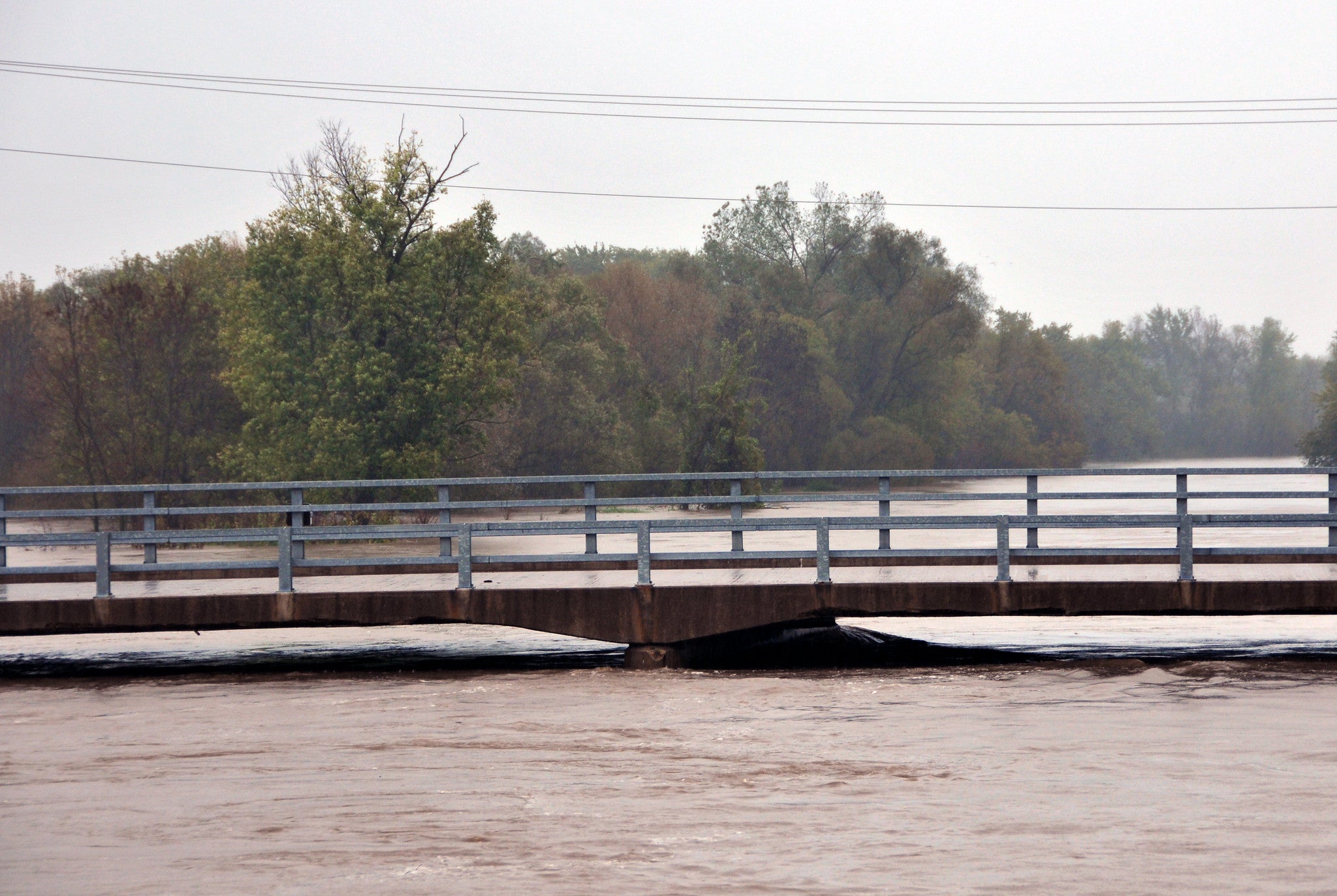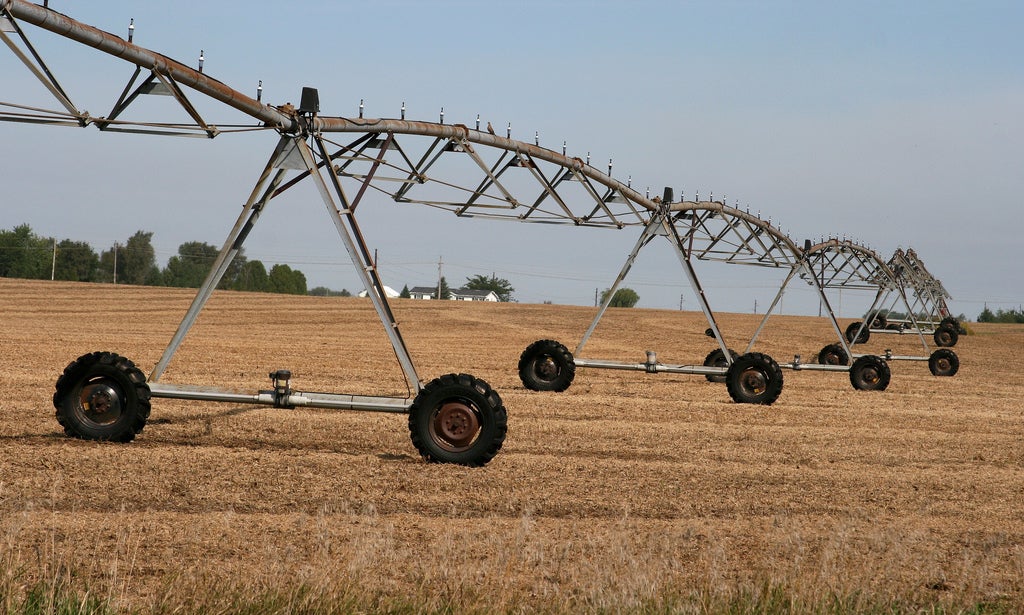Water levels on the state’s rivers and lakes are starting to rise due to recent snow melt.
But officials from the state Department of Natural Resources warn groundwater levels in the state are already at or near record highs.
Adam Freihoefer, water use section chief at the DNR’s Bureau of Drinking Water and Groundwater, said the state and the U.S. Geological Survey measure groundwater levels through a network of testing wells.
News with a little more humanity
WPR’s “Wisconsin Today” newsletter keeps you connected to the state you love without feeling overwhelmed. No paywall. No agenda. No corporate filter.
“We’ve been measuring water levels in those wells for, in some cases, over 100 years or nearly 100 years,” Freihoefer said. “We’re in a period of very, very high water levels to a point where we’ve never seen these levels.”
Like many Midwest states, Wisconsin received a record high amount of precipitation in 2019. But Freihoefer said the high groundwater levels can be traced back even further.
“It’s not just looking at 2019. It’s looking at 2016, 2017, 2018, looking at all those years. Ultimately what happened is we had several years that were continually wetter than the previous,” Freihoefer said. “The system’s never been able to settle down or go into a decline.”
[[{“fid”:”1177831″,”view_mode”:”full_width”,”fields”:{“format”:”full_width”,”alignment”:””,”field_image_caption[und][0][value]”:”%3Cp%3E%3Cem%3EGraph%20courtesy%20of%20the%20Wisconsin%20Department%20of%20Natural%20Resources%3C%2Fem%3E%3C%2Fp%3E%0A”,”field_image_caption[und][0][format]”:”full_html”,”field_file_image_alt_text[und][0][value]”:”graph of groundwater levels”,”field_file_image_title_text[und][0][value]”:”graph of groundwater levels”},”type”:”media”,”field_deltas”:{“1”:{“format”:”full_width”,”alignment”:””,”field_image_caption[und][0][value]”:”%3Cp%3E%3Cem%3EGraph%20courtesy%20of%20the%20Wisconsin%20Department%20of%20Natural%20Resources%3C%2Fem%3E%3C%2Fp%3E%0A”,”field_image_caption[und][0][format]”:”full_html”,”field_file_image_alt_text[und][0][value]”:”graph of groundwater levels”,”field_file_image_title_text[und][0][value]”:”graph of groundwater levels”}},”link_text”:false,”attributes”:{“alt”:”graph of groundwater levels”,”title”:”graph of groundwater levels”,”class”:”media-element file-full-width”,”data-delta”:”1″}}]]
Freihoefer said whether an area is seeing groundwater flooding, where the water table rises above the land surface, depends on the elevation.
He said citizens and local governments have been reaching out to his office about groundwater flooding basements or impacting infrastructure like roads.
“The sump pump is running, the basements flooding, you’re wondering what’s going on — it can have a lot of implications. It has a lot of citizens throughout the state worried about, as they see these groundwater levels rising, what it’s going to mean to their property,” Freihoefer said.
Groundwater flooding has also been taking a toll on infrastructure in some communities.
Bernie Lenz, utilities manager for the city of La Crosse, said the pressure from elevated groundwater levels has been pushing on the city’s pipes and manholes. That’s causing more collapses of older infrastructure and higher costs to fix the problem.
“When we try to fix an infrastructure problem with high groundwater, we have to de-water all the ground around that before you dig. Otherwise, it’s like digging a hole at the beach: you dig down and the water comes in and it just collapses. So it becomes a much more expensive problem to fix,” Lenz.
He said the city has already exceeded its budget for sewer repairs so the department is dipping into money that would have gone toward maintenance projects.
High groundwater levels can also cause more clean water to be pushed into the sewer system through cracks or openings in sewer pipes. Lenz said all of that water ends up at the city’s wastewater treatment plant.
“So more time running your pumps, more time on your filters, more chemicals that you add. Everything has to be treated, whether it’s clean or dirty, when it’s mixed together like that. So it ups your treatment costs at the plant quite a bit,” Lenz said.
On top of dealing with groundwater flooding, Lenz said his department is also gearing up for spring flooding on area waterways.
The National Weather Service in La Crosse has forecast a “well above normal” risk of flooding along the Mississippi River and several tributaries.
The latest Spring Flood Outlook shows below normal precipitation in recent weeks has lowered the threat of major flooding. But minor flooding is still likely, along with the potential for more serious conditions.
John Wetenkamp, service hydrologist for the National Weather Service, said this year’s snow melt has also been slowed by colder temperatures at night.
“We’re seeing temperatures warm up above freezing during the day, and then drop down below freezing at night. So we’re experiencing kind of a gradual thaw. And that’s really what you want to see when conditions are prime for flooding,” Wetenkamp said.
Wetenkamp said tributary rivers have already started to rise from the snowmelt and will likely continue through next week. He said the Mississippi River is expected to begin rising by March 10, just a few days ahead of last year’s spring melt.
And until those river levels decline, Freihoefer said groundwater levels will remain high.
“You need the rivers to come down, and then the groundwater to slowly drain out. And that takes time. It can be months and sometimes years for the system to lower,” Freihoefer said.
He said the state will need to see less precipitation in 2020 to start that process.
Wisconsin Public Radio, © Copyright 2025, Board of Regents of the University of Wisconsin System and Wisconsin Educational Communications Board.






